Types and varieties of Kalanchoe
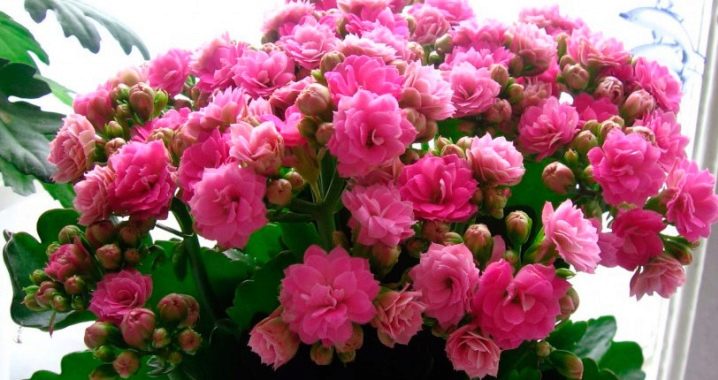
Flowers at home on window sills have long been a common thing. If you are planning to do window gardening, then you need to know which flowers require experience in handling plants, long and difficult care, and which are enough to just water when you remember. One type of plant suitable for beginners is Kalanchoe.
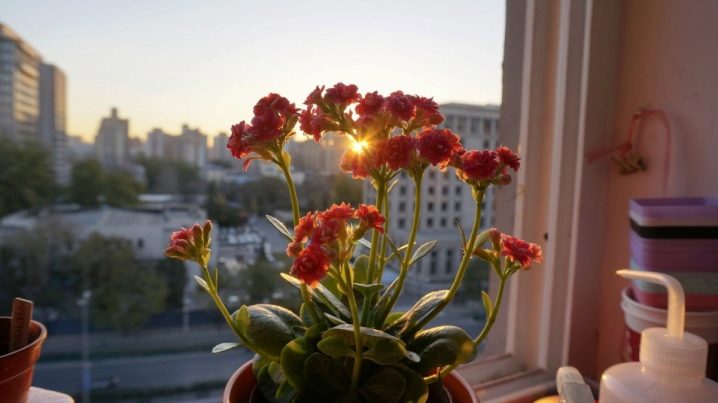
Peculiarities
Kalanchoe refers to succulents (plants that accumulate water inside their individual parts, in this case, in thick leaves), and therefore are extremely unpretentious in the watering regime. In nature, they are found in the tropics and hot countries, so this plant can quite be found in Africa and in all countries of Latin America. Due to the fact that the homeland of the Kalanchoe is generously endowed with the sun, the flower tolerates high temperatures well.

In our area, Kalanchoe is bred as an ornamental plant, despite the fact that it is a close relative of the common weed. At least, this was the case before, but after its natural diversity was discovered, breeders and botanists came to grips with this species. Now there are more than 200 subspecies of this flower. Its diversity really amazes - this family includes both shrub and herbaceous individuals, both dwarf and simply huge plants, both flowering and non-flowering - it all depends only on belonging to a particular species.

Flowering varieties
Despite the variety, all Kalanchoe varieties are divided into two main groups: flowering and non-flowering. So, Blossfeld's Kalanchoe, Mangina, Bekharskoe Kalanchoe, Rosalina mix, rhombopilosis, Tirsiflora and Terry Kalanchoe belong to the flowering subspecies of this plant.
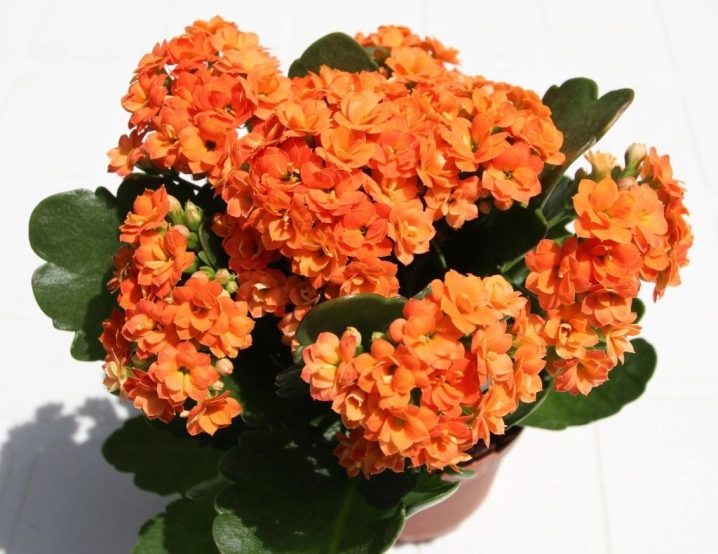
One of the most common flowering species - Kalanchoe Blossfeld. It is also known as Kalanchoe white, as it blooms with multi-layered snow-white flowers in the wild. Over time, other varieties of it were bred, so now the plant can bloom in absolutely any shades - from the most delicate colors of yellow to rich red. Very often, new names are indicated for each specific shade, bringing it into a separate subspecies.
But it must be remembered that most of the mixes are based on Blossfeld's Kalanchoe.
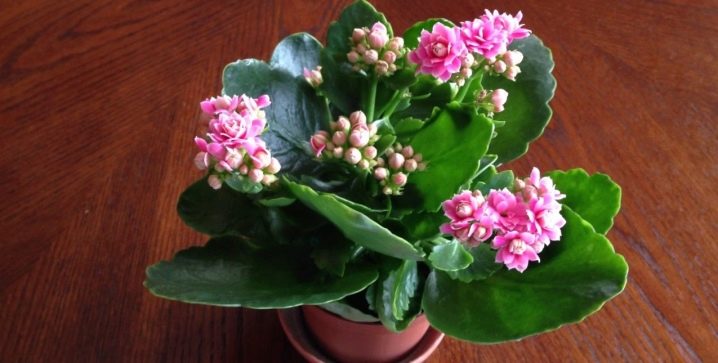
This variety comes from the island of Madagascar, and it does not belong to flowers, but to a subspecies of shrubs, so the size of the plant can vary from 15-20 centimeters to one or more meters. The leaves are large, oval, dark green in color, with a reddish border around the edges. This species in its natural environment begins to bloom with the first thaws - from February to May.
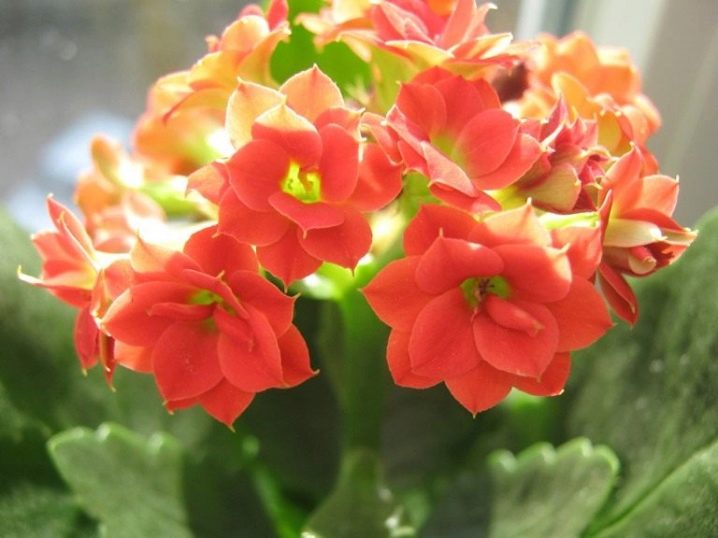
The next flowering variety is Kalanchoe Behar. It can also be found on the island of Madagascar, but it is also found in southeast Asia. It has a slightly "fluffy" thin stem and the same leaves of a dark green, almost olive shade. The shape of the leaves is varied - there are options for both a wavy line and a triangle shape. It begins to bloom in the middle of summer (usually the end of June and July, less often - the end of July), and blooms in small flowers of a pale golden color.
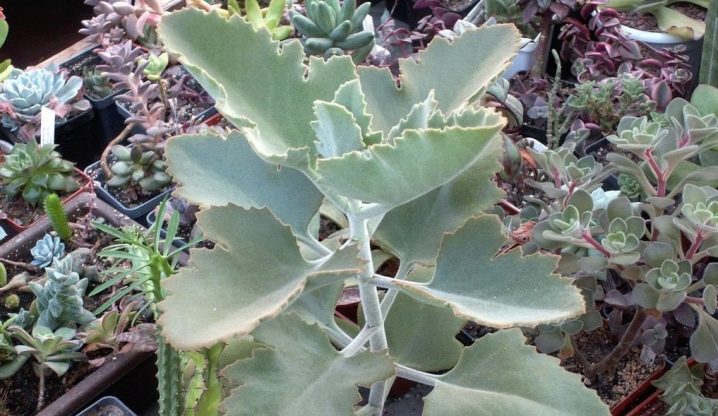
Kalanchoe Degremona is one of the most unusual flowering species. Its uniqueness lies in the way of reproduction: small copies of this plant appear on the leaves of the flower, which take root in the ground after they break off the mother leaf. Despite the fact that this species belongs to the herbaceous category of plants, it can reach 1.5-2 meters in height.
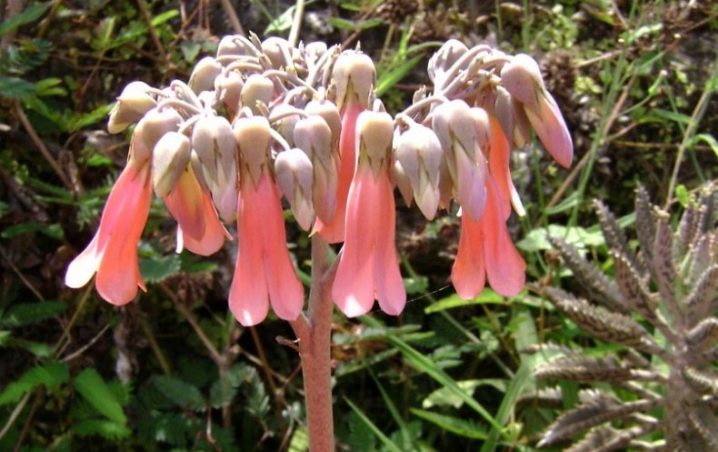
You can distinguish Degremona from other species by the leaves - they are triangular in shape, rather large (they can reach ten centimeters in length). A kind of "teeth" grow along the edges of the sheet. In addition, the leaves have a double color - the upper side can be completely green, excluding uneven edges, and the lower one is slightly dimmer, with a gray tint and clearly visible purple veins.

This plant blooms with small pink flowers, similar to bells (sometimes this variety is also called "Pink Butterflies"). After maturation, the newborns fly around the mother plant from the edges and take root on their own, taking root in the soil.
In this regard, Degremona is the only species of Kalanchoe (and, perhaps, plants in general) that can be called viviparous.
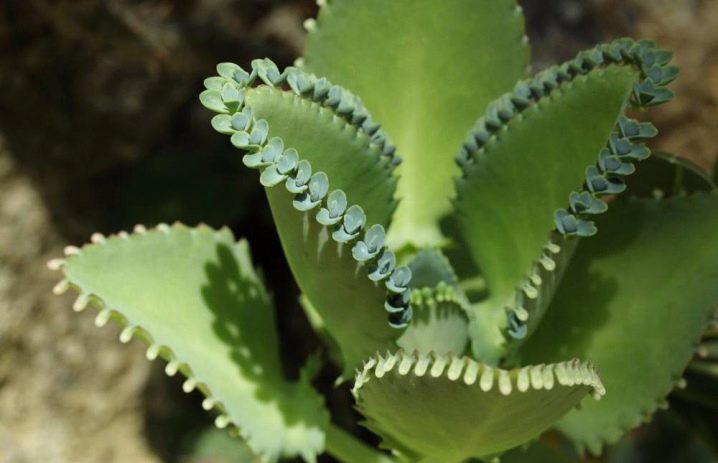
Mangina (mangini) is another interesting Kalanchoe variety, the uniqueness of which lies in its flowers. Most often they are green or red (but if suddenly the plant begins to bloom in the cold season, then there is a high probability that the buds will turn out to be orange). In shape, the flowers are oblong, elongated, somewhat reminiscent of the fruit bag of peas.
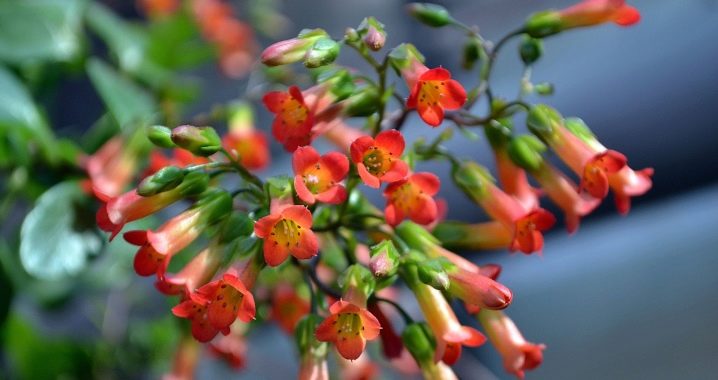
Due to the severity of the buds, usually located at the edges of the leaf, the stems of the plant gradually tilt downward, so when growing this variety, you should think in advance about creating all the necessary conditions for the comfortable growth of Kalanchoe.
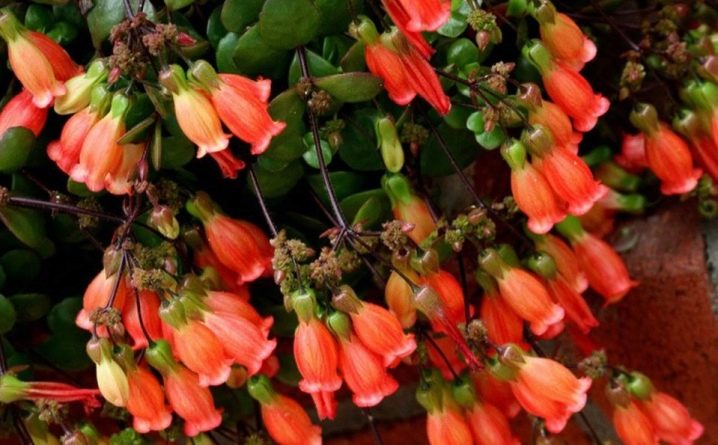
Another unusual subspecies of Kalanchoe is Tirsiflora (tube-colored). This is a rather large representative of this family - it can reach a height of 50-60 centimeters. Its main difference from others is that the plant grows not only upward. Small twigs-leaves are also scattered horizontally, which can grow up to ten centimeters or more in length.

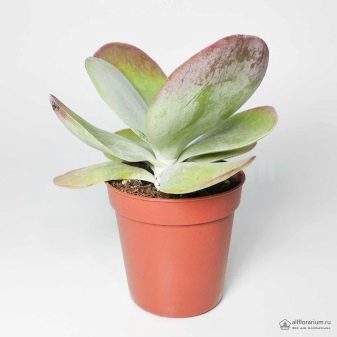
Like other representatives of the Kalanchoe, the shoots of Tirsiflora are also located on its horizontal leaves, but not along the entire length, but only at the tip of each individual leaf. The leaves are green, the shoots are gray-green and look like they were a normal green hue, but very dusty. note that Tirsiflora is divided into three varieties depending on the height to which it grows.
Allocate tall, medium and low species. The buds come in various shades - from purple-lilac to snow-white.
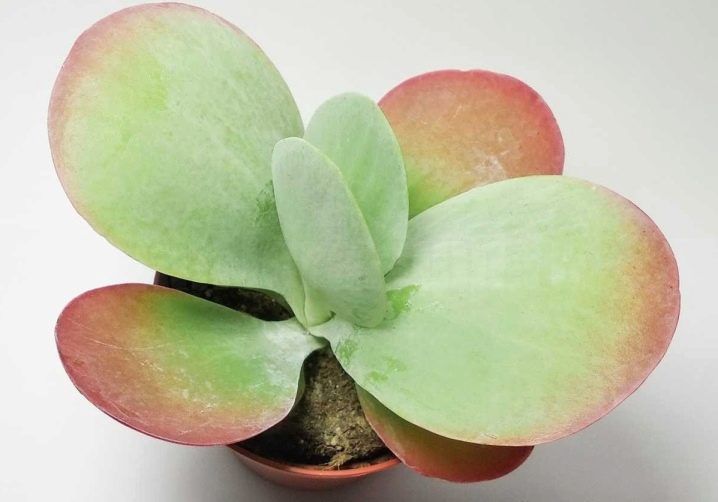
The dissected Kalanchoe got its name from the leaves that look like a lacy lattice. The leaves of this plant are very dense, but grow in thin, short twigs that are attached to several main stems. Because of this, there is a similarity with something openwork, wicker, or with thickets of coral reefs.
It can be up to one meter in size, so if you plan to grow this variety at home, take care to provide the required amount of free space. The color of the stem and leaves is bright green, but not dark, and this species blooms with small yellow or orange four-leafed buds.
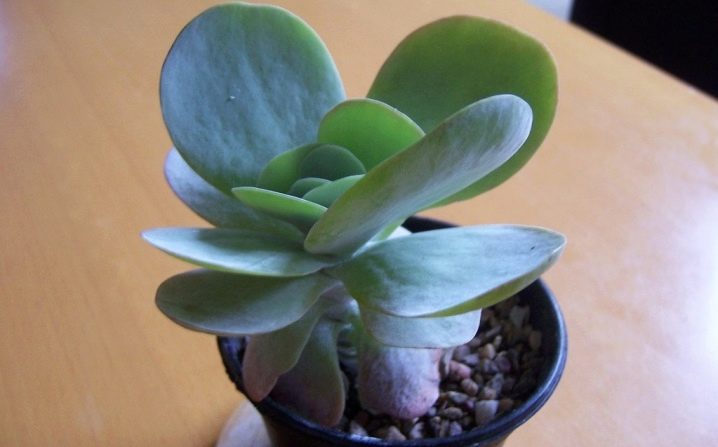
Rosalina mix is a mini-copy of the Blossfeld variety. Despite its small size, it blooms for up to ten (there are known cases of longer flowering) weeks. The leaves are dense and large, which makes the plant look very voluminous. The surface of the leaf is shiny and smooth. The inflorescences are somewhat reminiscent of dill umbrellas and are located on the same long and thin stems. The color of flowers is very diverse.
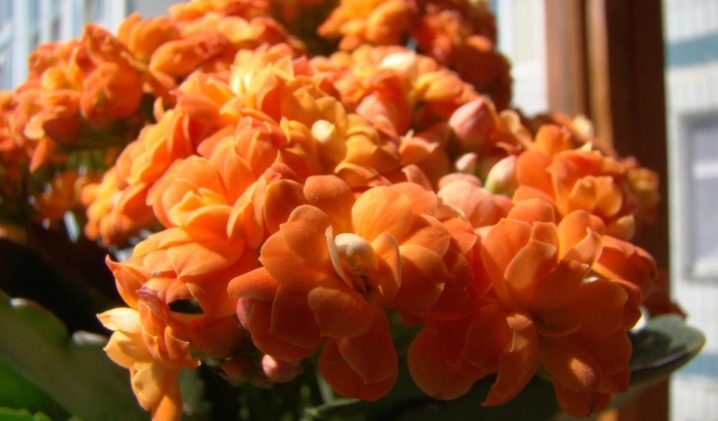
The next variety of Kalanchoe has a lot of names: terry, felt, "cat ears". The variety got its name due to the fact that the rounded leaves are slightly pointed at the tips and they are very soft, fluffy. They bloom in the same way as Rosalina mix - they release a long arrow, from which an umbrella with small bright flowers later opens.
This species is very fond of warm temperatures.
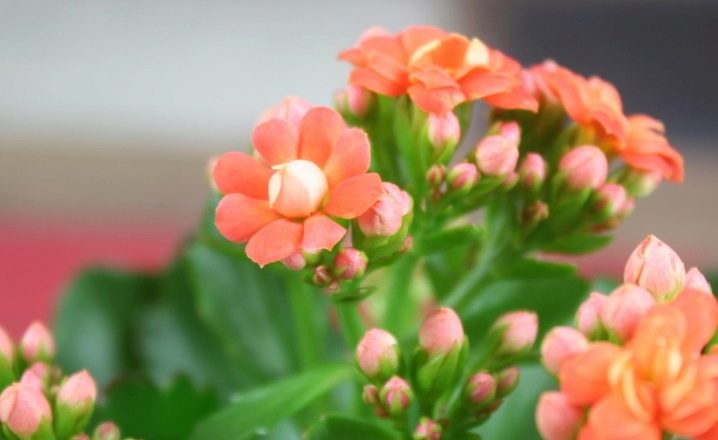
Kalanchoe rhombopylosis is one of the rarest decorative species, and it is the most difficult to care for. At home, it grows up very small. It resembles a stone in color - gray, sometimes with brown veins. The dense, large leaves are irregular and wave-like. It grows very slowly. It is worth knowing that This flower needs a lot of light for normal development and growth, so ordinary electric lighting may not be enough.
It is recommended to purchase a special lamp together with this subspecies.
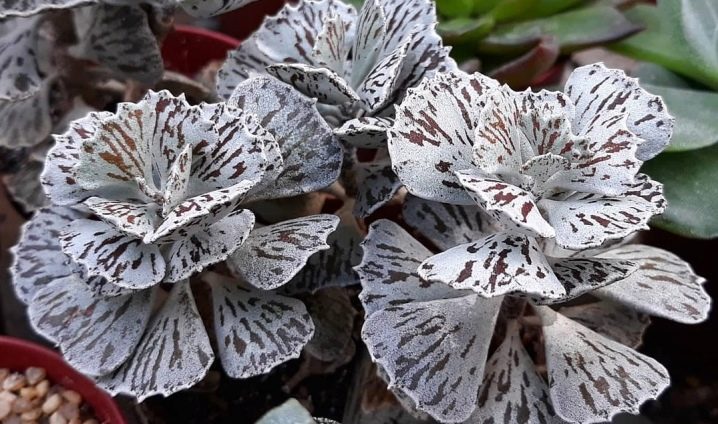
Non-flowering species
Not all types of Kalanchoe are flowering. Or some bloom very rarely, so that they too can be attributed to non-flowering. For example, certain types of flowering plants - felt and "deer horns", practically do not bloom under certain conditions.
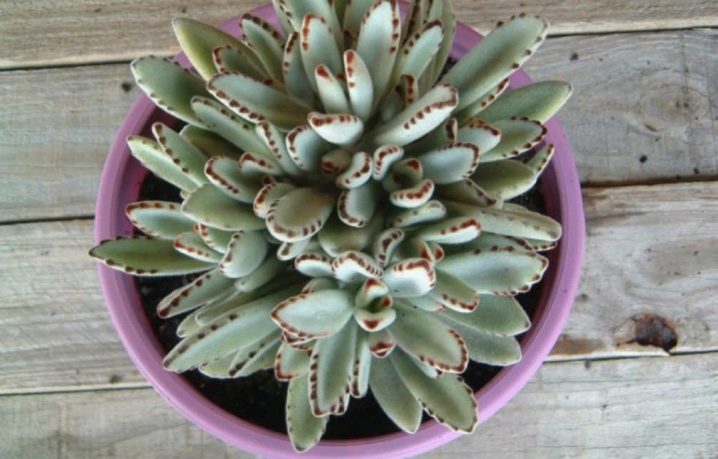
Felted (it was mentioned above, these are the same "cat ears" or tomentosa), even without flowering, it is very cute and able to create comfort, thanks to its soft leaves covered with delicate fluff. A "Antlers (laciniata)" can be purchased at least for the sake of their leaves, which grow, forming a complex openwork pattern.
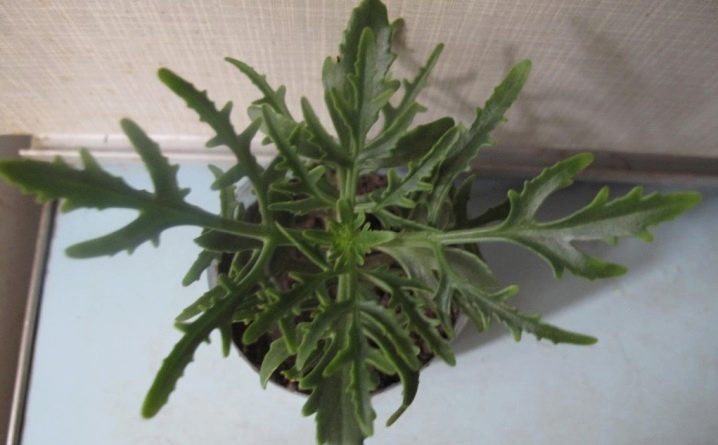
How to choose?
The preference in choosing the right Kalanchoe variety depends entirely on your tastes and the purpose of the purchase. So, all subspecies are decorative and suitable for home cultivation. The only thing to consider is each species has its own specifics of care, so using a single system for everyone, you risk simply ruining the plant.
To decorate the interior, you can use any variety of Kalanchoe that fits the given style of the situation, and, in addition, according to the teachings of Feng Shui, it is the most noble plant. The best choice for decorating hanging decor items would be Kalanchoe mangin. Under the weight of the blossoming buds, its stems tilt downward, forming colorful airy thickets.

If you are a supporter of alternative medicine or a fan of Indian culture, then you should be aware of the role played by the dissected Kalanchoe ("deer horns"). Although, in fact, it does not possess any medicinal properties. The Kalanchoe pumila subspecies has been used in medicine for a very long time and is a recognized source of useful substances, for example, vitamins, minerals, polysaccharides and others.
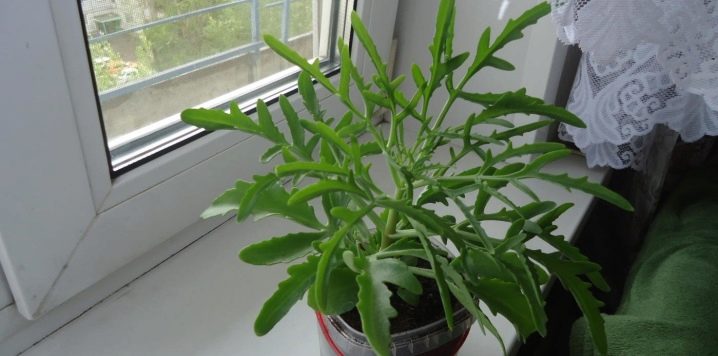
The plumose Kalanchoe is one of the most famous medicinal subspecies.... Helps to cope with indigestion and diseases of the female genital organs, as well as the kidneys and genitourinary system. If necessary, it can be used as a disinfectant and antibacterial agent for open shallow lesions of the upper layers of the skin.
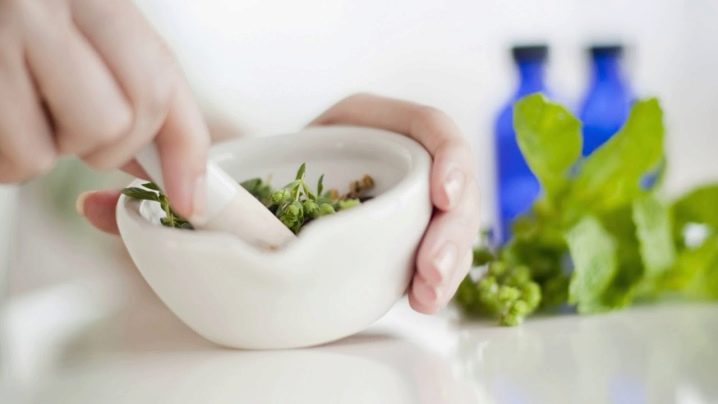
Not recommended for people with heart problems.
German writer Johann Wolfgang Goethe believed that Degremona could help with male diseases. But not only - Degremona is also antimicrobial, anti-inflammatory and healing agent. Kalanchoe Fedchenko is a rather rare, but very beautiful variety. It was used as an antiallergic and healing agent for shallow burns. It is believed that some varieties of Kalanchoe are widespread in cosmetology. for the healing of skin surface disorders. And also the plant has long been used like a compress for toothache.
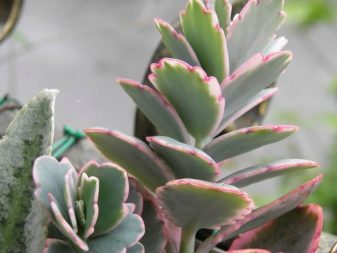

Almost all types of Kalanchoe have healing properties, but to varying degrees - if with the help of some our grandmothers were still treated, then the beneficial properties of others are discovered only in our time. This is not surprising - despite belonging to one large species, each plant has its own unique set of chemicals that can become so necessary for humans.
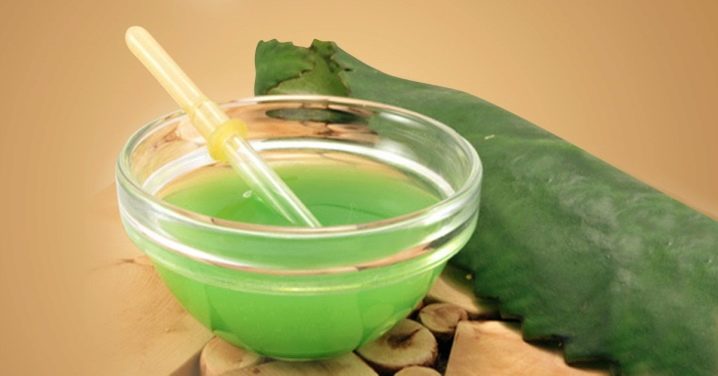
General rules for home care
As already mentioned, each species has its own separate care system, and you cannot care for all varieties in the same way. But there are some general rules, the observance of which will help the plant to survive immediately after purchase, while you are looking for the necessary information on the competent content of the flower.
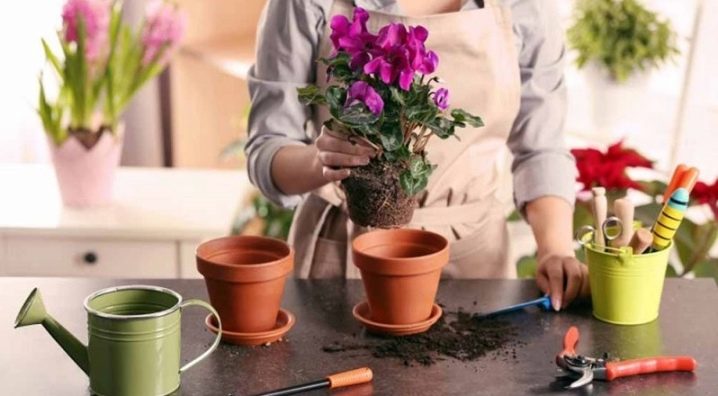
Kalanchoe comes from warm countries, therefore tolerates high temperatures and sun. More precisely, they need the sun even more than ordinary plants. These flowers do not like soil that is too oily. They are unpretentious with watering, this is just the case when the plant is better to under-water than to over-water, because the plant belongs to succulents, which means it can accumulate moisture. For the same reason, take care to place in the pot drainage system.
For small species, it is better to choose narrow tall vases.
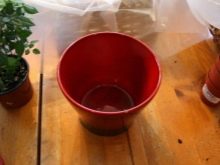
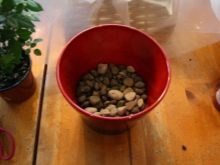
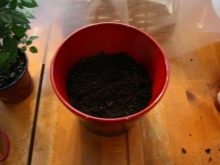
Sometimes it is necessary to change open sunlight to a less bright one, but not leave it in the shade, as the risk of root rotting increases. It is better to build a small sun canopy made of light-colored fabric and open it from time to time over the pot with the plant. Avoid low temperatures - the moisture accumulated in the leaves will simply freeze and the flower will die from hypothermia.
Do not forget to spray the plant with a spray bottle, but not too often - once every few days is enough. The earth in the vase needs to be loosened a little to ensure the flow of oxygen.
It often happens that the Kalanchoe does not bloom and stretches upward. You can find out how to solve this problem in the video below.



















































The comment was sent successfully.